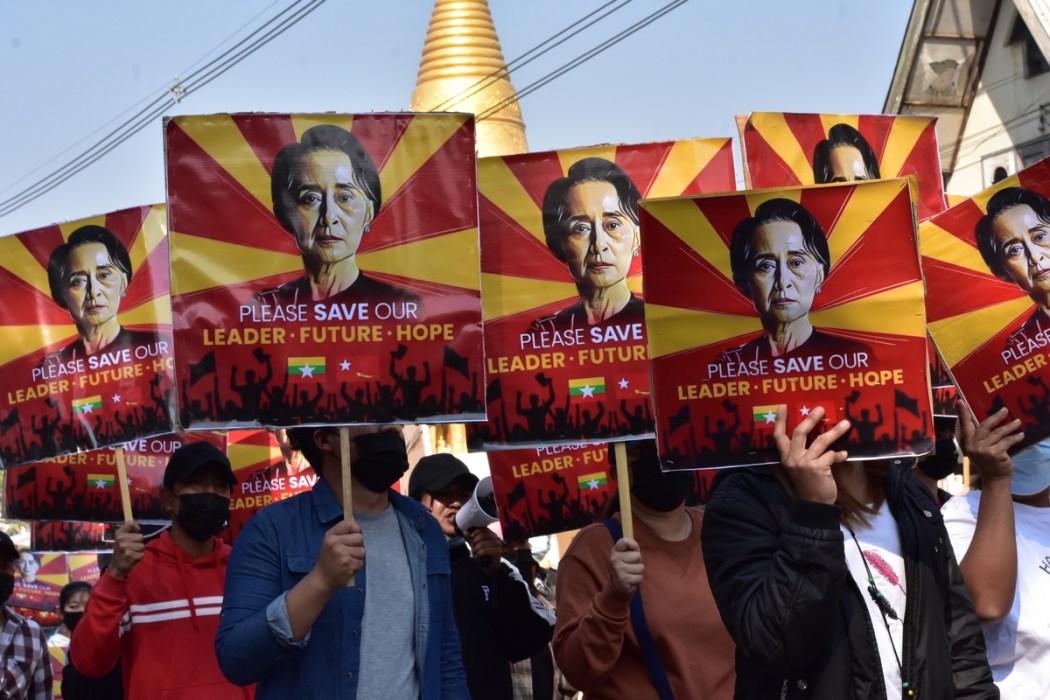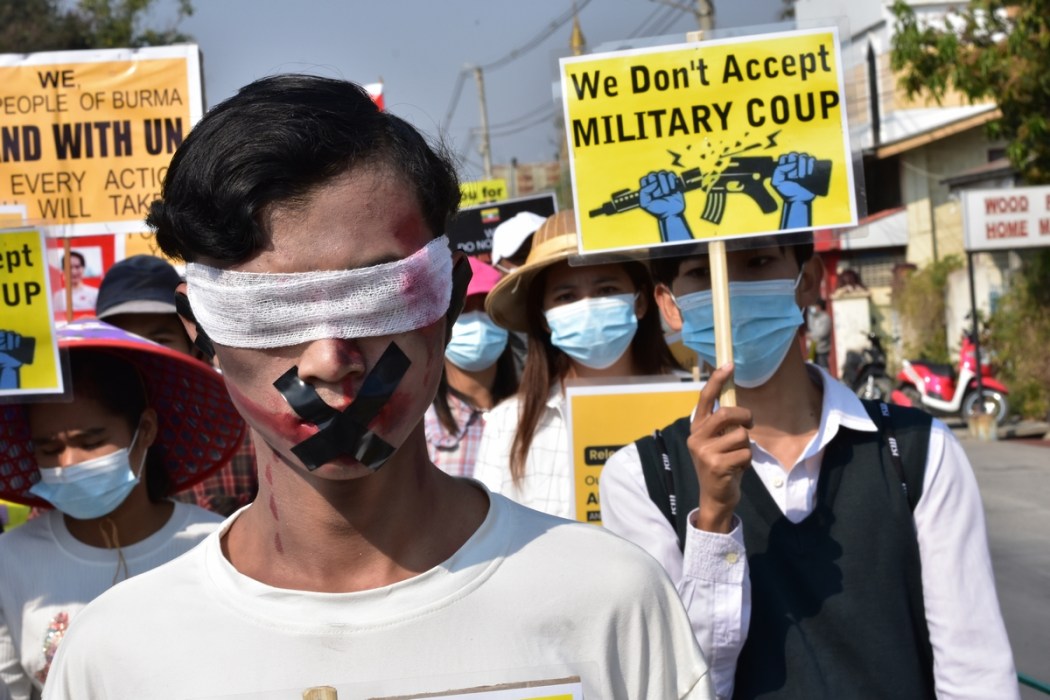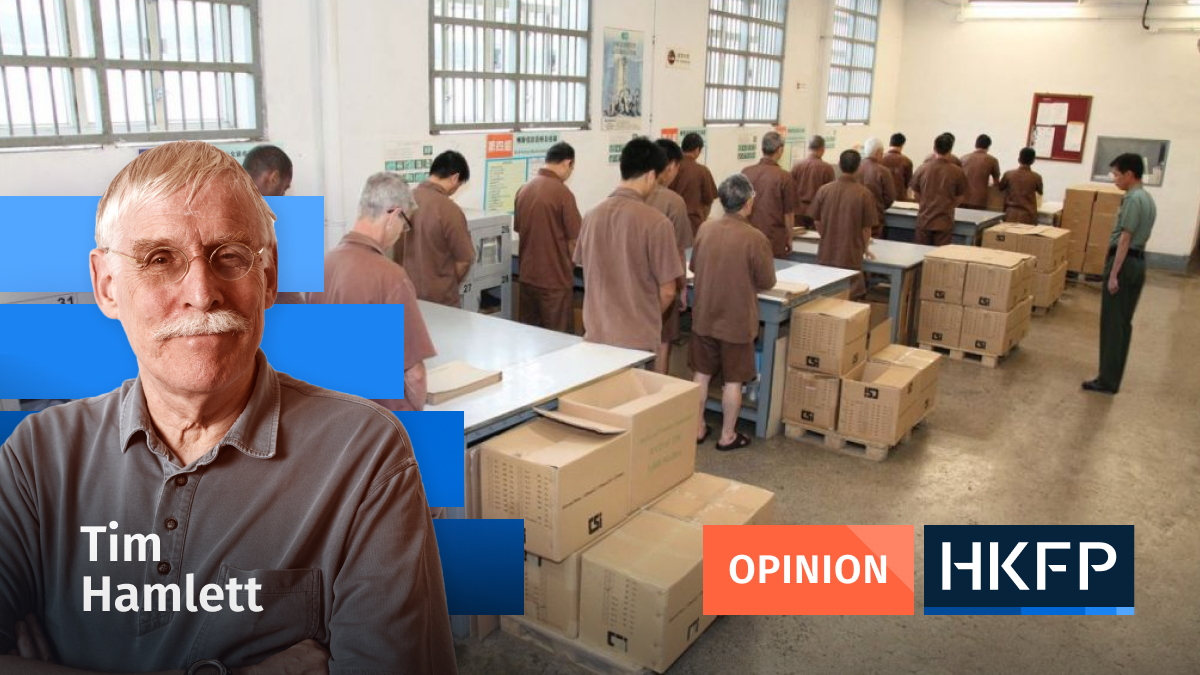Myanmar’s military authorities have banned public assemblies but this has only encouraged protesters to devise new ways of expressing opposition to the coup.
After the military grabbed power on February 1, a civil disobedience movement was launched which encouraged the public to stop going to work, boycott businesses owned by generals, and join anti-coup protests.

Medical health workers were among the first to support the civil disobedience movement by resigning from their posts. Many continued to work at hospitals but they wore red ribbons as a sign of protest against the military government.
This was followed by community protests which featured the banging of pots and pans to create noise and symbolically cast away evil spirits. A resident explained the popularity of this form of protest:
Banging pots and pans has continued until today, and it lasts about 15 minutes from 8:00 pm to 8:15 pm. Though this mode of campaign may seem insignificant, it ensures that all citizens can participate and express their voices peacefully and safely without having to leave their houses.
How protesters are creatively blocking roads
Many have observed the active participation of civil servants such as teachers, health workers and forestry officers in protests across Myanmar. Protesters have used ingenious methods to stop traffic and prevent government personnel from reporting for work. Kyaw Zwa Moe, editor of the English edition of The Irrawaddy, writes about this:
At the Myaynigone intersection, just a few miles from Sule, protesters helped pick up onions and gains of rice from the asphalt road, where someone had “dropped” them. Dozens of protesters picked up each onion and grain of rice, one at a time, while police watched over them. The purpose was to stop the traffic—as they had during the “car breakdown protest” and the “slow-motion drive protest” to create traffic jams in support of the Civil Disobedience Movement (CDM), which is aimed at preventing government staff from going to work.
Even trishaws (three-wheeled vehicles) have been deployed in the campaign:
Protesters also rode on boats:
A resident added more details about the “Onion Pick-up” campaign:
Basically, protesters intentionally drop onions in the middle of busy roads, and everyone helps pick up the onions, and put them in the (broken/bottomless) bags. This way, the police cannot claim that protesters are illegally blocking the roads.
Slowing down traffic is also done through the “Tying Shoelaces” campaign:
Street performances can also gather people and block traffic:
Artists and activists have joined forces in producing large anti-coup banners and street graffiti:
Rejecting the military government
Protesters have also initiated actions aimed at undermining the military-controlled bureaucracy. One of these is the “Lottery boycott” campaign.
The incomes from lottery directly go into government funds just like other taxes. So we stop buying lottery tickets to prevent our taxes from going to the military.
The “anti-press conference” campaign is done by journalists boycotting the press conferences organized by the military. Some journalists from a local state media were forced to attend one of the press conferences which led to their resignation.

The “curse campaigns” are done to name and shame generals, especially Commander-in-Chief Min Aung Hlaing. Related to this, the “supernatural campaign” involves fortune-tellers and spiritual leaders who cast spells on superstitious military generals.
The “Lets’ report pro-military Facebook pages” is an online campaign that encourages Facebook users to report dubious pages spreading misinformation in support of the coup.
Only three weeks have passed since the coup but protesters have already used various creative methods to express dissent. Military authorities have recently resorted to violence but this has only encouraged more people to join the protests, as seen in the February 22 general strike, which mobilized the biggest anti-coup protests across Myanmar.
With additional reporting from Global Voices’ Civic Media Observatory project. This article originally appeared on Global Voices.
Support HKFP | Policies & Ethics | Error/typo? | Contact Us | Newsletter | Transparency & Annual Report | Apps
| HKFP is an impartial platform & does not necessarily share the views of opinion writers or advertisers. HKFP presents a diversity of views & regularly invites figures across the political spectrum to write for us. Press freedom is guaranteed under the Basic Law, security law, Bill of Rights and Chinese constitution. Opinion pieces aim to point out errors or defects in the government, law or policies, or aim to suggest ideas or alterations via legal means without an intention of hatred, discontent or hostility against the authorities or other communities. |
Help safeguard press freedom & keep HKFP free for all readers by supporting our team

More HKFP OPINION:
HKFP has an impartial stance, transparent funding, and balanced coverage guided by an Ethics Code and Corrections Policy.
Support press freedom & help us surpass 1,000 monthly Patrons: 100% independent, governed by an ethics code & not-for-profit.










